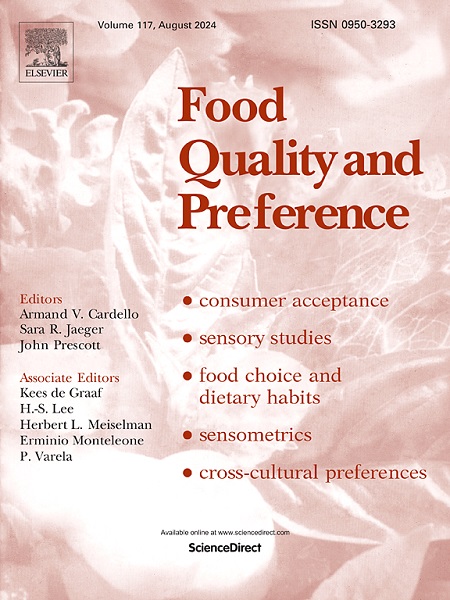Low-income consumers' perceptions of ultra-processed foods
IF 4.9
1区 农林科学
Q1 FOOD SCIENCE & TECHNOLOGY
引用次数: 0
Abstract
In recent years there has been a rapid surge of consumption of ultra-processed foods (UPFs) in many developed countries. UPFs are characterized by high levels of fat, salt and sugar, which are in opposition to the World Health Organization's guidelines, advocating for the limitation of foods with high concentrations of these nutrients. To implement effective public policy interventions, it is important to understand the perception of UPFs among final consumers. The present study contributes to current knowledge providing quantitative evidence on the processing, healthiness, and tastiness perceptions of UPFs among low-income Italian consumers. A sample of 810 consumers were surveyed using an online questionnaire including a food shopping task with minimally processed foods and UPFs. Findings reveal an overall adequate awareness of the amount of processing needed to create certain food products. Additionally, low-income consumers did not perceive the investigated UPFs as extremely distant from their actual processing and healthiness classifications. Nevertheless, respondents generally perceived seemingly more processed foods as being less healthy. Results do not underline the need for policymakers to prioritize interventions aimed at fostering an increase of knowledge of UPFs among this socioeconomically disadvantaged group.
求助全文
约1分钟内获得全文
求助全文
来源期刊

Food Quality and Preference
工程技术-食品科技
CiteScore
10.40
自引率
15.10%
发文量
263
审稿时长
38 days
期刊介绍:
Food Quality and Preference is a journal devoted to sensory, consumer and behavioural research in food and non-food products. It publishes original research, critical reviews, and short communications in sensory and consumer science, and sensometrics. In addition, the journal publishes special invited issues on important timely topics and from relevant conferences. These are aimed at bridging the gap between research and application, bringing together authors and readers in consumer and market research, sensory science, sensometrics and sensory evaluation, nutrition and food choice, as well as food research, product development and sensory quality assurance. Submissions to Food Quality and Preference are limited to papers that include some form of human measurement; papers that are limited to physical/chemical measures or the routine application of sensory, consumer or econometric analysis will not be considered unless they specifically make a novel scientific contribution in line with the journal''s coverage as outlined below.
 求助内容:
求助内容: 应助结果提醒方式:
应助结果提醒方式:


